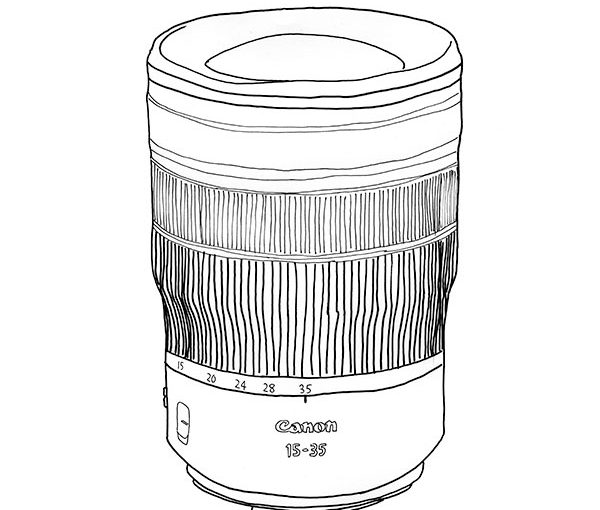Canon RF 15-35 Vs EF 16-35: Which Wide Angle Lens Reigns Supreme?
In a comparison between the Canon RF 15-35 and EF 16-35 lenses, the RF lens offers better functionality, control, and optical quality than its EF counterpart. The RF lenses are also smaller and lighter, providing more design flexibility.
Upgrade to an RF lens for improved performance in all areas. When it comes to choosing between the Canon RF 15-35 and EF 16-35 lenses, it’s important to consider their features and capabilities. The RF lens lineup is designed for the future, offering superior functionality and control compared to EF lenses.
Additionally, RF lenses boast higher optical quality in the same class as EF lenses. Moreover, RF lenses tend to be smaller and lighter, allowing for greater design flexibility. We will dive deeper into the key differences between these two lens options and help you decide which one is the right choice for your photography needs.
Table of Contents
- 2. Canon Rf Lenses Vs Ef Lenses
- 3. Comparing Canon Rf 15-35 And Ef 16-35
- 4. Use And Compatibility
- Frequently Asked Questions Of Canon Rf 15-35 Vs Ef 16-35
- Is Canon Rf Or Ef Better?
- What Is The Canon 16-35mm Lens Best For?
- Is It Worth Upgrading To Rf Lenses?
- Can You Use An Ef Lens On An Rf Camera?
- Conclusion
- CallofPhotography
2. Canon Rf Lenses Vs Ef Lenses
|
Key differences between RF and EF lenses:
Understanding the benefits of RF lenses:
Evaluating the advantages of EF lenses:
|

Credit: www.notesfromtheroad.com
3. Comparing Canon Rf 15-35 And Ef 16-35
When comparing the Canon RF 15-35 and EF 16-35 lenses, the RF lens offers better functionality, control, and optical quality. Additionally, RF lenses are smaller and lighter than their EF counterparts, providing more design flexibility. Overall, the Canon RF 15-35 is a solid choice for photographers looking for improved performance and versatility.
| Specification | Canon RF 15-35 | Canon EF 16-35 |
|---|---|---|
| Focal Length | 15-35mm | 16-35mm |
| Maximum Aperture | f/2.8 | f/4 |
| Image Stabilization | Yes | No |
| Minimum Focus Distance | 0.28m | 0.28m |
| Filter Diameter | 82mm | 77mm |
4. Use And Compatibility
When it comes to the use and compatibility of Canon RF 15-35 vs EF 16-35 lenses, there are a few key points to consider:
4.1 Using EF lenses on an RF camera:
While EF lenses cannot be directly fitted onto an RF mount, you can use EF and EF-S lenses on an EOS R System camera with the help of EF-EOS R Mount Adapters. This allows you to maintain both quality and functionality.
4.2 Benefits of upgrading to RF lenses:
Upgrading to RF lenses offers several advantages. RF lenses are designed for the future, with better functionality and control compared to EF lenses. They also provide better optical quality than EF lenses of the same class. Additionally, RF lenses offer more design flexibility and are generally smaller and lighter than equivalent EF lenses.
4.3 Compatibility considerations and adapters:
When considering compatibility, it’s important to note that RF lenses are not compatible with EF mounts, and EF lenses cannot be used directly on an RF mount. However, the use of EF-EOS R Mount Adapters can bridge this gap and provide compatibility between EF lenses and RF cameras.

Credit: www.reddit.com

Credit: www.reddit.com
Frequently Asked Questions Of Canon Rf 15-35 Vs Ef 16-35
Is Canon Rf Or Ef Better?
The Canon RF is generally considered better than the EF. It offers better functionality, control, and optical quality. RF lenses are smaller, lighter, and designed for the future. EF lenses cannot be directly fitted on an RF mount, but you can use them on an EOS R System camera with an adapter.
What Is The Canon 16-35mm Lens Best For?
The Canon 16-35mm lens is best for landscape photography and wide-angle shots, offering stunning performance, closer focusing, and faster focusing speeds. It also provides better ghosting and flare protection compared to its predecessor. Additionally, the lens is smaller and lighter than equivalent EF lenses, making it a versatile option for photographers.
Is It Worth Upgrading To Rf Lenses?
Upgrading to RF lenses is worth it as they offer better functionality, control, and optical quality than EF lenses. They are also smaller, lighter, and provide closer and faster focusing speeds, along with improved ghosting and flare protection. In short, RF lenses deliver higher performance in all areas.
Can You Use An Ef Lens On An Rf Camera?
EF lenses cannot be directly used on an RF camera. However, you can use EF and EF-S lenses on an EOS R System camera with an EF-EOS R Mount Adapter.
Conclusion
The Canon RF 15-35 and EF 16-35 lenses are both excellent options for wide-angle photography. However, the RF lens offers several advantages over its EF counterpart. It provides better functionality, control, and optical quality. Additionally, RF lenses are designed with more flexibility, making them smaller and lighter compared to equivalent EF lenses.
Overall, if you’re looking to upgrade, the Canon RF 15-35 lens proves to be a superior choice for capturing stunning wide-angle shots with higher performance in all areas.
I am a photography enthusiast turned blogger, sharing my passion and expertise on this blog, "CallofPhotography." Growing up surrounded by nature, I developed a love for capturing moments through my lens. After studying Fine Arts with a focus on photography, I launched my blog to share tutorials, gear reviews, and my own photographic work. Through engaging storytelling, I invites readers to join her visual journey, inspiring and empowering photographers of all levels worldwide.


